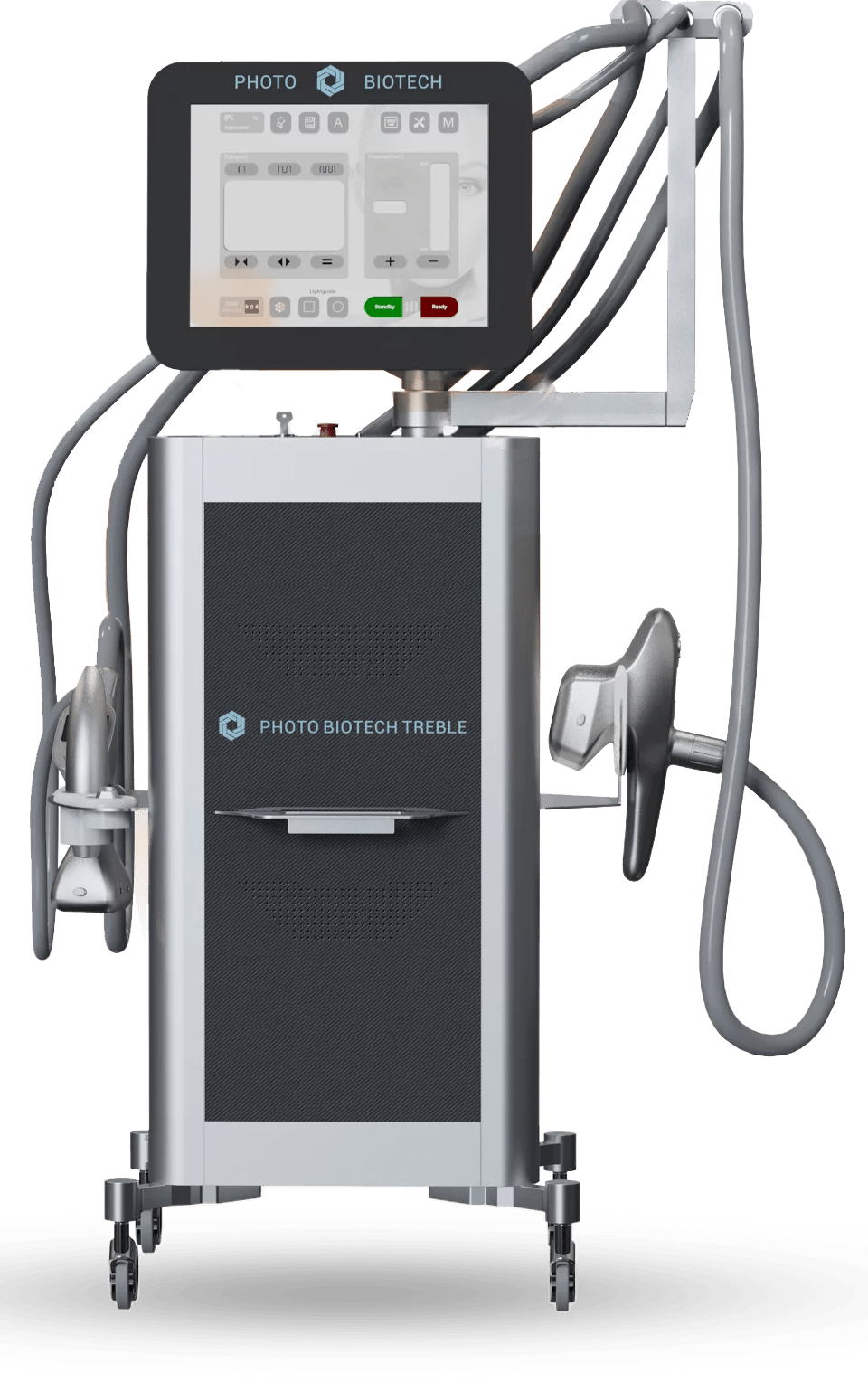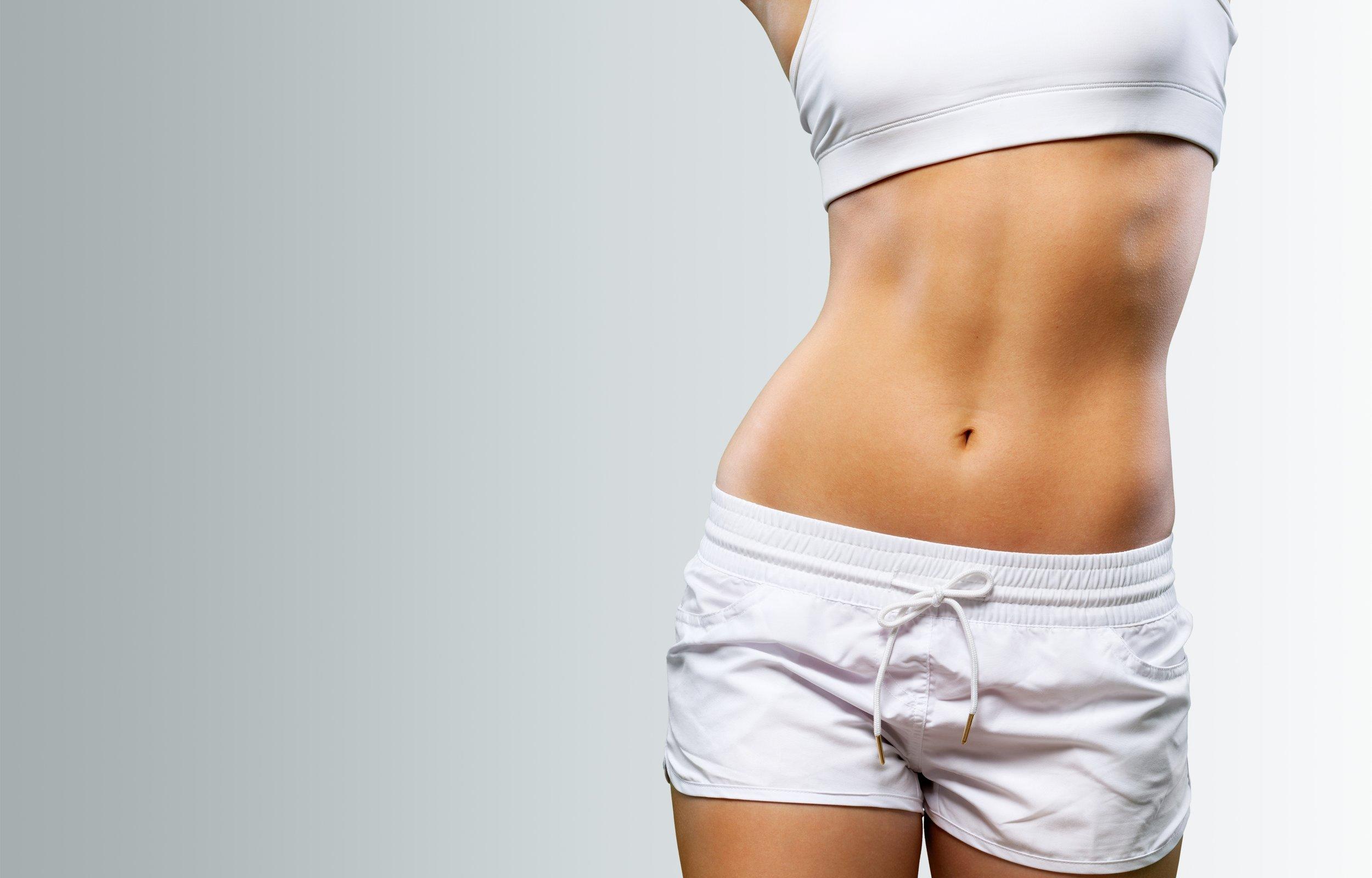
Treble-RF Complete™
With Treble-RF Complete™ Crush Cellulite and Improve Skin tone and texture. Circumferential and cellulite reduction immediately after one treatment. Tone, contour and shape the silhouette. Patient and practice centric treatments with innovative multi-application technology.

Treble-RF Complete™
With Treble-RF Complete™ Crush Cellulite and Improve Skin tone and texture. Circumferential and cellulite reduction immediately after one treatment. Tone, contour and shape the silhouette. Patient and practice centric treatments with innovative multi-application technology.

DISCOVER THE DIFFERENCE
Treble RF Complete™
NOTICEABLE AND MEASUREABLE RESULTS AFTER THE FIRST TREATMENT
CRUSH CELLULITE
BODY CONTOURING
BODY SCULPTING
SHRINK FAT CELLS
IMPROVE TONE AND TEXTURE
REDUCE STRETCH MARKS
SMOOTH OUT WRINKLES
POWER FACELIFT
CONTOUR JAWLINE
TREATMENT APPROACH
Photo Biotech Treble® is a non-invasive body contouring treatment for circumferential and cellulite reduction*. Photo Biotech Treble enables you to safely achieve a toned, contoured and smooth-shaped silhouette in typically 3 treatment sessions (single treatment protocol is also available).
Which areas can be treated with Photo Biotech Treble?
Target areas under chin, neck, arms, thighs, buttocks, flank and abdomen. Most patients see gradual and cumulative results throughout the treatment protocol.


TREATMENT APPROACH
Photo Biotech Treble® is a non-invasive body contouring treatment for circumferential and cellulite reduction*. Photo Biotech Treble enables you to safely achieve a toned, contoured and smooth-shaped silhouette in typically 3 treatment sessions (single treatment protocol is also available).
Which areas can be treated with Photo Biotech Treble?
Target areas under chin, neck, arms, thighs, buttocks, flank and abdomen. Most patients see gradual and cumulative results throughout the treatment protocol.
THE RF Wavelength Specturm

THE RF Wavelength Specturm

Industry Data
Projections in the Global Cellulite Treatment Market
North America shows the strongest prospects with an expected market value of over US$ 2.1 Billion by the end of 2028, growing at an impressive CAGR of 8.1% during the forecast period.
Sought after aesthetic treatments get patients in the door. Get a rapid ROI with your Photo Biotech technology and offer more treatments to increase profits. Use this technology for optimal efficacy and maximize treatment value from the immediate and secondary benefits of this ideal technology
Industry Data
Projections in the Global Cellulite Treatment Market
North America shows the strongest prospects with an expected market value of over US$ 2.1 Billion by the end of 2028, growing at an impressive CAGR of 8.1% during the forecast period.
Sought after aesthetic treatments get patients in the door. Get a rapid ROI with your Photo Biotech technology and offer more treatments to increase profits. Use this technology for optimal efficacy and maximize treatment value from the immediate and secondary benefits of this ideal technology
Treble Procedure
What Is The Photo Biotech Treble Procedure Like?
Most patients find Photo Biotech Treble comfortable and describe the treatment as feeling like a warm deep-tissue massage. The treatment parameters are easily adjusted to ensure a comfortable treatment experience. It is normal to experience a warm sensation for a few hours after your treatment. Some patients report a pinkish appearance at the treatment area that may last a few hours post treatment, and skin may appear pink for several hours.
Clinical Guide To The Hand-pieces
Cellulite treatment areas could be on the neck (under chin), arms, thighs, buttocks, flank and abdomen. Most patients see gradual and cumulative results throughout the treatment regime.
Biological Impact of treatment – Increased metabolism leading to demarcated desired anabolic and catabolic alterations at predetermined skin components and depths.
The Technology
Treble technology causes deep heating of the fat cells, their surrounding connective tissue and the underlying dermal collagen fibers. This type of efficient heating and vacuum stimulates the growth of new and better collagen and elastin which results in localized reduction in skin laxity, body volume, and an overall improvement in skin structure and texture.


Treble Procedure
What Is The Photo Biotech Treble Procedure Like?
Most patients find Photo Biotech Treble comfortable and describe the treatment as feeling like a warm deep-tissue massage. The treatment parameters are easily adjusted to ensure a comfortable treatment experience. It is normal to experience a warm sensation for a few hours after your treatment. Some patients report a pinkish appearance at the treatment area that may last a few hours post treatment, and skin may appear pink for several hours.
Clinical Guide To The Hand-pieces
Cellulite treatment areas could be on the neck (under chin), arms, thighs, buttocks, flank and abdomen. Most patients see gradual and cumulative results throughout the treatment regime.
Biological Impact of treatment – Increased metabolism leading to demarcated desired anabolic and catabolic alterations at predetermined skin components and depths.
The Technology
Treble technology causes deep heating of the fat cells, their surrounding connective tissue and the underlying dermal collagen fibers. This type of efficient heating and vacuum stimulates the growth of new and better collagen and elastin which results in localized reduction in skin laxity, body volume, and an overall improvement in skin structure and texture.
Three Year Warranty
Heavy Duty Commercial Grade
German Engineering
Ultra Fast 10 Minutes per Zone
No
Consumables
About Cellulite
Its name makes it sound like a medical condition. But cellulite is nothing more than normal fat combined with other tissue, in chambers, beneath the skin. The fat appears bumpy because it pushes against connective tissue, causing the skin above it to pucker.
Cellulite isn’t harmful. Many people, though, would like to get rid of it because of the way it looks.
What Causes Cellulite
Having cellulite doesn’t mean you are overweight. Even thin people can have it. If you are overweight, however, losing weight may reduce cellulite.
Cellulite is more common among women than men. If other women in your family have cellulite, there’s a good chance you will too.
Other factors that influence how much cellulite you have and how visible it is include:
Cellulite (also known as adiposis edematosa, dermopanniculosis deformans, status protrusus cutis, gynoid lipodystrophy, and orange peel syndrome) is the herniation of subcutaneous fat within fibrous connective tissue that manifests topographically as skin dimpling and nodularity, often on the pelvic region (specifically the buttocks), lower limbs, and abdomen. Cellulite occurs in most postpubescent females. A review gives a prevalence of 85%-98% of women, indicating that it is physiologic rather than pathologic. It can result from a complex combination of factors ranging from hormones to heredity.
More Causes
The causes of cellulite include changes in metabolism, physiology, diet and exercise habits, sex-specific dimorphic skin architecture, alteration of connective tissue structure, hormonal factors, genetic factors, the microcirculatory system, the extracellular matrix, and subtle inflammatory alterations.
Hormonal Factors
Hormones play a dominant role in the formation of cellulite. Estrogen may be the important hormone to initiate and aggravate cellulite. However, there has been no reliable clinical evidence to support such a claim. Other hormones, including insulin, the catecholamines adrenaline and noradrenaline, thyroid hormones, and prolactin, are all believed to participate in the development of cellulite.
Genetic Factors
There is a genetic element in individual susceptibility to cellulite. Researchers led by Enzo Emanuele have traced the genetic component of cellulite to particular polymorphisms in the angiotensin converting enzyme (ACE) and hypoxia-inducible factor 1A (HIF1a) genes.
Predisposing Factors
Several factors have been shown to affect the development of cellulite. Sex, race, biotype, distribution of subcutaneous fat, and predisposition to lymphatic and circulatory insufficiency have all been shown to contribute to cellulite.
About Cellulite
Its name makes it sound like a medical condition. But cellulite is nothing more than normal fat combined with other tissue, in chambers, beneath the skin. The fat appears bumpy because it pushes against connective tissue, causing the skin above it to pucker.
Cellulite isn’t harmful. Many people, though, would like to get rid of it because of the way it looks.
What Causes Cellulite
Having cellulite doesn’t mean you are overweight. Even thin people can have it. If you are overweight, however, losing weight may reduce cellulite.
Cellulite is more common among women than men. If other women in your family have cellulite, there’s a good chance you will too.
Other factors that influence how much cellulite you have and how visible it is include:
Cellulite (also known as adiposis edematosa, dermopanniculosis deformans, status protrusus cutis, gynoid lipodystrophy, and orange peel syndrome) is the herniation of subcutaneous fat within fibrous connective tissue that manifests topographically as skin dimpling and nodularity, often on the pelvic region (specifically the buttocks), lower limbs, and abdomen. Cellulite occurs in most postpubescent females. A review gives a prevalence of 85%-98% of women, indicating that it is physiologic rather than pathologic. It can result from a complex combination of factors ranging from hormones to heredity.
More Causes
The causes of cellulite include changes in metabolism, physiology, diet and exercise habits, sex-specific dimorphic skin architecture, alteration of connective tissue structure, hormonal factors, genetic factors, the microcirculatory system, the extracellular matrix, and subtle inflammatory alterations.
Hormonal Factors
Hormones play a dominant role in the formation of cellulite. Estrogen may be the important hormone to initiate and aggravate cellulite. However, there has been no reliable clinical evidence to support such a claim. Other hormones, including insulin, the catecholamines adrenaline and noradrenaline, thyroid hormones, and prolactin, are all believed to participate in the development of cellulite.
Genetic Factors
There is a genetic element in individual susceptibility to cellulite. Researchers led by Enzo Emanuele have traced the genetic component of cellulite to particular polymorphisms in the angiotensin converting enzyme (ACE) and hypoxia-inducible factor 1A (HIF1a) genes.
Predisposing Factors
Several factors have been shown to affect the development of cellulite. Sex, race, biotype, distribution of subcutaneous fat, and predisposition to lymphatic and circulatory insufficiency have all been shown to contribute to cellulite.